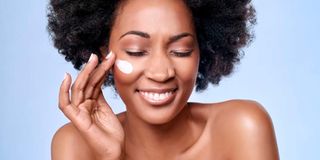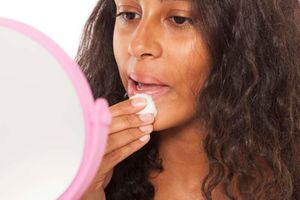Oily skin care routine: Tips and tricks

The excess oil on your face is a result of overactive sebaceous glands which produce oil for lubrication.
What you need to know:
- Oily skin can be a challenge to maintain, but with a proper routine using the tips provided, you can keep your skin looking healthy.
It is essential to cleanse your face, tone, and moisturise for your skin to remain balanced.
Astringents are generally reserved for those who have very oily or acne-prone skin and need extra help balancing their pH levels.
Oily skin can make you feel like your skin is constantly dirty and oily. The excess oil on your face is a result of overactive sebaceous glands which produce oil for lubrication, and to protect your skin from drying.
One way around this issue is to use an exfoliant or scrub at least once a week to remove dead skin cells and debris from your pores, to prevent them from clogging up.
In addition to the daily cleansing, toning, and moisturising, there are additional steps that will help to keep your skin balanced, reduce breakouts, and maintain your oily skin looking healthy.
Cleanse
The first thing to do is cleanse the face with a gentle, non-drying cleanser that will not strip it of natural oils or irritate sensitive skin. Next, use an oil-free, non-comedogenic (will not clog pores) cleanser that will remove excess sebum and makeup without leaving your skin feeling tight or dry.
If you wear heavy eye makeup, use a separate makeup remover before cleansing with facial soap. You can also opt for an exfoliating face cleanser, which can help remove dead skin cells and excess oil on the surface of your face.
Tone
After cleansing, use a toner to cleanse any remaining impurities from pores and restore pH balance. A good toner is meant to tighten open pores, constrict facial capillaries, and control oil production.
This can help prevent future breakouts by reducing the chances of bacteria entering pores after cleansing, as well as reducing existing redness or irritation.
Treat
If you feel like your skin is too oily or prone to breakouts, consider using a treatment product that will control sebum production and reduce the appearance of enlarged pores. These products usually contain ingredients such as benzoyl peroxide (BPO) and sulphur, which help regulate oil flow within the roots of the hair, preventing sebum from reaching the skin's surface. In addition, the active ingredients help to dry the excess oil within pores and reduce inflammation around existing acne lesions.
Moisturise
The final step in your regular oily or combination skincare routine is moisturising. You should apply a non-comedogenic (non-pore clogging) moisturiser that is lightweight and oil-free. Look for a water-based product that will help to reduce the chances of acne flare-ups caused by excess oils mixing with other products in your routine.
Skincare tips
- If you have very oily skin or get regular breakouts, use an astringent after cleansing and before applying your toner and moisturiser. Astringents are alcohol-based solutions containing ingredients such as witch hazel or alum, which help tighten pores and constrict facial capillaries. They also balance the skin's pH levels after cleansing when it is more prone to dry or get irritated by harsh chemicals in cleansers.
- If your oily skin is prone to redness or irritation, consider consulting your dermatologist or doctor about taking a prescription-strength treatment. This treatment reduces oil production and can help prevent future breakouts by keeping your pores clear of debris which can clog the skin.
- Occasionally use face masks to help purify your skin and control excess oil production. Look for a clay-based mask that is effective at absorbing impurities from the face. Keep in mind that you should only use this product once or twice a week to avoid over-drying your skin or remove beneficial oils produced by the glands. Honey and oatmeal masks are good options.




